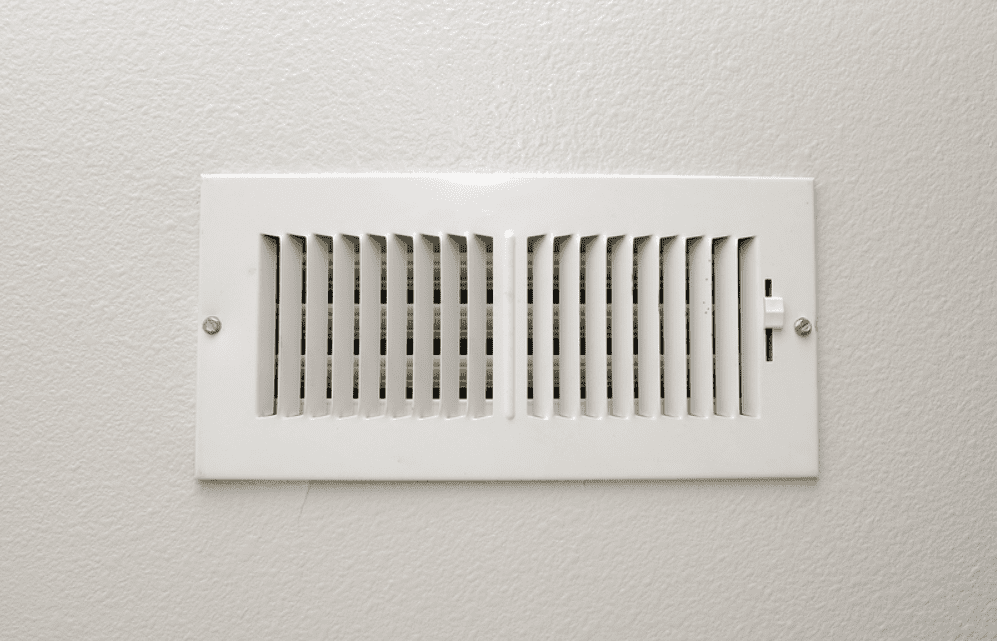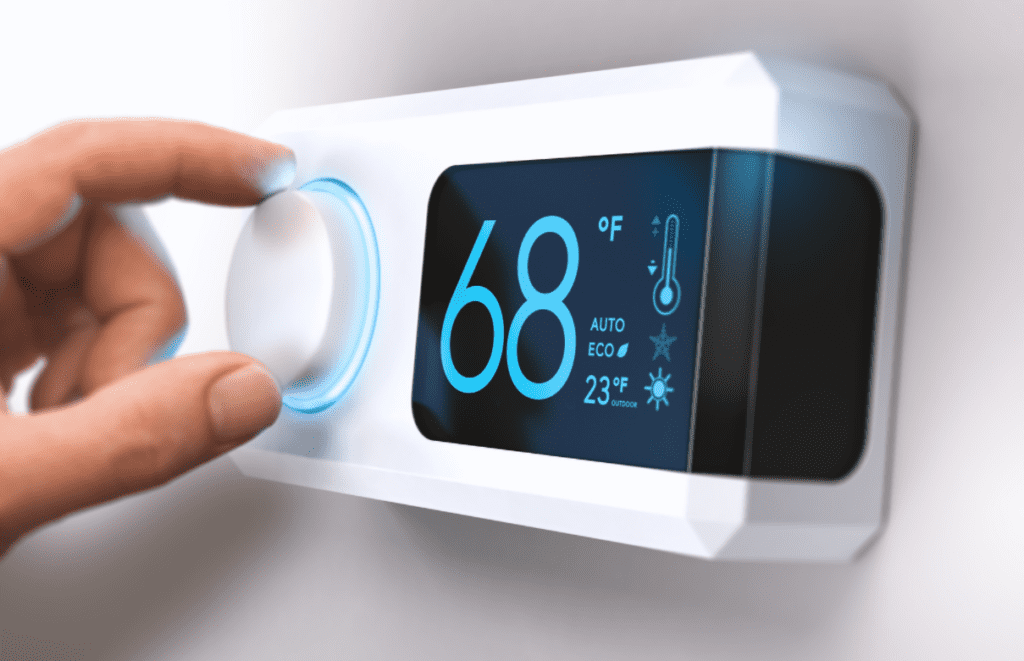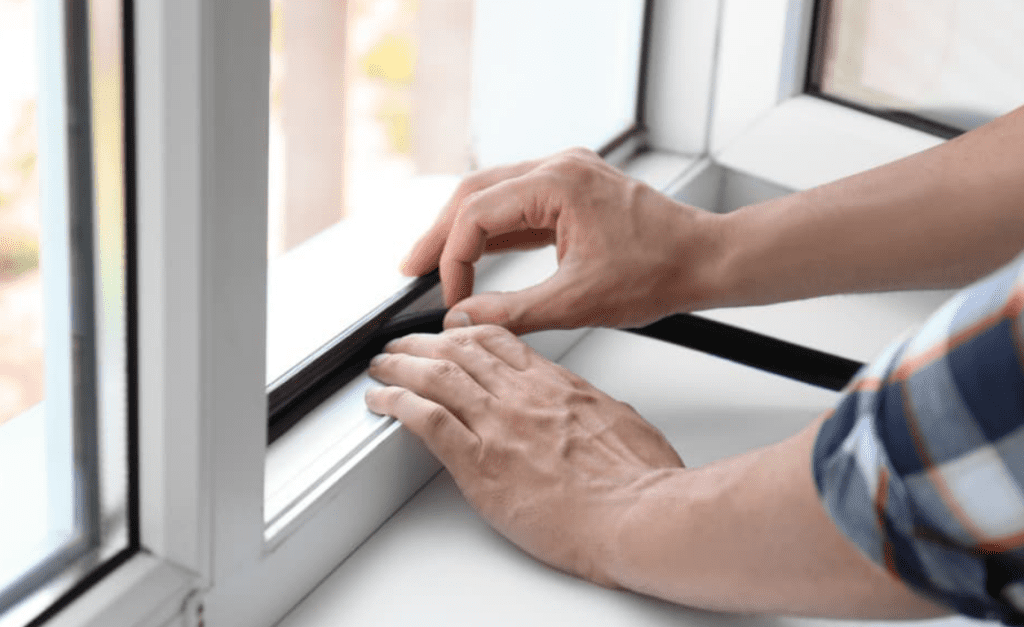Whether it’s the middle of winter or during the scorching heat of the summer sun, you never want a situation where your thermostat is not reaching the set temperature. Several things can cause your thermostat not to reach your desired temperature. Some of these issues are easy to fix, while others are costly and time-consuming.
In this guide to thermostat not reaching set temperature troubleshooting, we’re going to take a look at each of the reasons your thermostat is struggling and what to do about each one of them. We’ll also go into some detail about why it’s an issue when your thermostat is unable to reach its set temperature. Many things could be happening, and it’s essential to get to the root of the problem. If you’re struggling to find the best thermostat brands and models, read our full guide on how to find the right one for your needs.
Your furnace might have a dirty air filter
A dirty air filter is very common why your house isn’t getting enough airflow to satisfy the requirements of the thermostat. The air filter or furnace filter is located on the side or bottom of the furnace and has the job of filtering out particles and contaminants as the air gets cycled through your HVAC system. If this filter catches enough dirt and particles, it will get clogged and block airflow.
To help you better understand this line of thought, here’s how your HVAC system works.
- You turn your thermostat to HEAT or COOL and set the temperature to the desired amount.
- Your furnace or air conditioner then activates and starts the process of creating an airflow.
- If you want cooler temperatures, your outside air conditioner and inside A-coil will create cold air. If you wish for warmer temperatures, then your furnace will activate and start generating hot air.
- The fan or blower inside your furnace will then blow the warm or cold air through a series of ducts and pipes connected to the furnace. The air will terminate through a series of registers dispersed throughout your house.
- Most of your registers will have air blowing out of them, but a few registers are designed to suck air back into them. There will usually be around one per room or two in larger rooms like the living or dining room.
- The air getting sucked back into your HVAC system travels through a different series of ducts and pipes and returns to the furnace.
- This recycled air passes through an AIR FILTER on the side or bottom of your furnace to get cleaned and purified.
- The purified air then returns to the furnace to be cooled down or warmed up and once again begins its journey through the series of ducts and pipes.
- This process repeats until the air temperature inside your house reaches what is specified by your thermostat.
- Once your thermostat senses the correct change in temperature, it will automatically click off until it needs to start up again.
The air filter on the side or bottom of your furnace plays a huge role in ensuring your air stays clean. It’s responsible for blocking dirt, pollen, debris, and even particles that spread the flu or other diseases. If the filter gets too dirty, air will not pass through it properly, and you’ll notice less airflow in your house. Less airflow also means that your thermostat will take much longer to reach the set temperature.
What to do about a dirty air filter?

Make sure that your HVAC system is turned off and remove the air filter to examine it. If it is very obviously dirty and coated with dust, this is most likely your problem. Throw the old filter away and install a new one that is the same size. It’s vital that the filter exactly matches the size of your furnace to ensure that no amount of air can sneak by unfiltered.
Checking and replacing your filter is something that you should do every three months or more often if needed. If you don’t want to worry about this issue, you can also schedule an HVAC technician to perform routine service checks on your system. Checking the air filter is a regular part of every technician’s servicing procedure.
A problem with your hot air registers
In the same way that your furnace filter impacts the flow of air into your house, the number of registers you have will also play a role. Hot-air registers are the registers that are used for air to get dispersed into your house. If you don’t have enough of these registers, or they’re in the wrong place, your thermostat is going to have a hard time reaching the set temperature.
A qualified HVAC technician should have taken measurements of your living spaces and installed registers accordingly whenever you built your home. Too many registers mean that the air will get dispersed too much to have any significant impact. Too few registers, however, will have the same effect because only so much air can get out of each register.
To remedy this issue, you’ll have to add or remove registers accordingly. This should only be done by a licensed HVAC technician who knows where your registers need to be placed. Once you have the right amount of registers in the right places, your thermostat should have no problem reaching its set temperature.
You might not have enough return air registers

Return air registers are the registers that are sucking air back into the furnace instead of the registers that are blowing air into your house. Return air registers play an extremely important role in maintaining the temperature of your house. If you don’t have enough of this type of register, your thermostat is going to have an extremely difficult time reaching its set temperature.
The amount of air blowing out of your hot air registers is directly linked to the amount of air that gets sucked in by the return air registers. The furnace or air conditioner itself doesn’t actually create air. It simply heats up or cools down the air that’s getting pulled in by the return air registers.
It’s crucial that your house has the correct amount of hot air and return air registers distributed throughout it. You don’t want to have an excess or deficit of either one, but rather have them relatively close in amount. An HVAC technician will know how many registers you need, where they should be placed, and the airflow of each one.
Your HVAC system is too small
A surprisingly common problem in older houses is that the HVAC system wasn’t sized correctly and is too small for the house. The HVAC system consists of the furnace, air conditioner, and ductwork responsible for air distribution. The ductwork is sized according to the size of the furnace and air conditioner that is getting installed.
If the furnace, air conditioner, ductwork, or any combination of the three is too small for your house, your thermostat will have difficulty reaching its set temperature. This problem occurs with much less frequency in newer houses due to the advancements in technology and formulas to properly size an HVAC system. Here are some instances when an HVAC system is too small for the home.
- If an addition is built onto the house without the installation of an additional HVAC system.
- Your heating and cooling installer improperly sized the unit that your house needs.
- You replaced your old air conditioner or furnace with a unit smaller than the original one.
Can my HVAC system be too big?
On the flip-side of the equation, there’s such a thing as your furnace or air conditioner being too big for your house. Your thermostat will have no problem reaching the set temperature in cases like this, but it will be a false reading. Here’s what I mean.
Too much air blowing out of your registers will reach your thermostat too fast and satisfy the temperature before the rest of the house has a chance to catch up. This means that your thermostat will reach the set temperature and turn off, but the temperature in the rest of the house won’t match what the thermostat is saying. This is just as much of a problem as having a system that’s too small.
The thermostat itself might be broken

Thermostats are like any other electrical device in that they will eventually give out. If you notice that it isn’t reaching the set temperature, you should first look at the age and condition of the thermostat. You can have a furnace and air conditioner in perfect working order, but they won’t turn on or off if your thermostat is busted. The thermostat is the snake’s head, so if that’s not working, nothing else will either.
Installing a new thermostat isn’t difficult, but you could blow a fuse on your furnace or damage the motherboard if done incorrectly. A blown fuse is cheap and easy to fix, but a motherboard problem is expensive and something you don’t want to deal with. Replacing a thermostat is a task best left to the pros if you have no experience working with electronics or electrical systems.
You might bust the fan or blower in your furnace
If your fan or blower motor in your furnace is busted, your thermostat won’t be able to reach the set temperature. The fan is one of the main components in your furnace and is responsible for pushing warm or cold air down the ductwork and out through the registers. If this part of the furnace isn’t working, your air will still get heated or cooled, but it will just sit in your furnace and not go anywhere.
Like every other part of your HVAC system, Fans need to be serviced and maintained regularly. If you have a service technician inspect your furnace, they’ll let you know if your fan is at risk for giving out. A broken fan that goes unnoticed can cause severe damage to your furnace or air conditioner, depending on which one is trying to run.
If your air conditioner is trying to cool your house, but the fan isn’t distributing air, your AC coils will ice over and could ruin your air conditioner. If you don’t notice the problem right away, your AC will eventually freeze over and cease operating. Likewise, if your furnace continues to create hot air that doesn’t go anywhere, it could overheat and cause damage to the furnace components.
Your thermostat might be in the wrong place

Another thing that could be keeping your thermostat from reaching its set temperature is if it’s in the wrong location. You don’t want your thermostat to be in the direct path of airflow, but you also don’t want it somewhere air will never touch it. Typically, you want the thermostat to be somewhere in the middle of your house, unobstructed and out of direct airflow.
If your thermostat is too close to a register, it will sense the change in air temperature too fast and turn off prematurely. If, however, it’s in a location that doesn’t get any airflow, the thermostat will never sense a temperature change and will run indefinitely. Disconnecting and relocating a thermostat is arduous work and should be handled by an HVAC professional.
Your AC might be iced over
If it’s summertime and your air conditioner ices over, it will produce less cold air and affect your thermostat’s ability to reach the set temperature. There are several reasons that your air conditioner coil and line set can ice over.
- Restricted airflow over the coils
For your air conditioner to function correctly, air needs to be flowing over the coils on the outside of the air conditioner. If they’re not getting enough airflow, your air conditioner will start to ice up.
- The air filter is dirty or clogged.
As we discussed earlier, a dirty or clogged air filter on the side or bottom of your furnace will cause less air to pass by them. This reduction in the air has the same effect on your air conditioner that restricted airflow over the coils does. The AC will start to ice up, and your thermostat will not reach its set temperature.
- The fan or blower isn’t working properly.
If the fan or blower in your furnace isn’t working, it will cause your air conditioner to ice up. This happens because the air that is getting cooled inside the furnace isn’t going anywhere, and it eventually freezes up the A-coil in the furnace. This, in turn, will cause the air conditioner itself to ice up.
- Your AC system is leaking refrigerant.
A refrigerant leak can occur in any number of places on your HVAC system. It can be in your air conditioner coils, on the A-coil inside your furnace, or on the copper line set that connects the two. No matter where the leak is, it could cause your AC to freeze over. This, in turn, will not allow enough air to flow into your house and make your thermostat reach its set temperature.
Poor insulation or old doors and windows

Your first line of defense against air escaping from your house is insulation, door seals, and window seals. If you don’t have adequate insulation around the perimeter of your house, air will escape and impede your thermostat’s ability to reach the set temperature. Likewise, if you have older doors and windows, inside air will likely get out, and outside air will get in. Both of these phenomenons will have the same effect on your thermostat – it will have trouble reaching its set temperature.
Something is blocking your registers
If you haven’t noticed by now, the amount and functionality of your hot and cold air registers have a huge impact on your thermostat’s ability to reach the set temperature. If either type of register has its airflow blocked or impeded, there is a reduction in airflow. Any time there’s a reduction in airflow, your thermostat will have trouble reaching its set temperature.
To check the airflow of each register, go up to it and place your hand in front of the grill. In the case of hot or supply air registers, you should be able to feel the air blowing against your hand. Your register or ductwork is clogged if you don’t feel any air or less air than usual.
For return air registers, you won’t be able to feel air blowing against your hand because their job is to suck air in. The only way to know if one of these registers is clogged is to remove the cover and perform a visual inspection.
You can perform these rough examinations yourself, but it might be necessary to enlist the services of an HVAC technician. An HVAC service technician will have the tools and technology required to measure the amount of airflow of each register precisely. Only they can tell you for certain if you have clogged or reduced airflow without tearing your ductwork apart.
Why is it so important that my thermostat reaches its set temperature?

Simply put, if your thermostat never reaches its set temperature, it will never turn off until something gives out. Even if it eventually reaches the set temperature, but only with great difficulty, you’ll encounter a whole other set of problems. Here are some of the issues you can expect with a thermostat that has difficulty reaching its set temperature.
- High energy bills
The longer your air conditioner or furnace runs, the more electricity or gas it’s using. This will result in higher than normal energy bills each month and could become an unwelcome expense.
- Shorter lifespan of a furnace or air conditioner
The more your AC and furnace run, the sooner they’ll give out. These appliances have a limited lifespan and won’t last forever.
- Insufficiently or improperly filtered air
The more your HVAC system is running, the more air will flow over and through the air filter. This will inevitably cause your filter to get dirty faster than it should and result in your air being dirtier and improperly filtered.
Frequently Asked Questions
Question: How often should I replace my air filter?
Answer: Replacing your air filter isn’t difficult, and it should be changed out every three months. Some newer systems come with reusable air filters. If this is your system, you should remove the filter every three months and vacuum it out to clean it. If you need assistance checking or replacing your air filter, contact an HVAC service technician.
Quetion: How often should I have my HVAC system serviced?
Anwer: Having a qualified service technician perform a thorough inspection of your HVAC system once a year is best. You can do it more often if you think it’s necessary, but at least once a year.
Question: How long should a thermostat last before it gives out?
Answer: All thermostats are different and have different lifespans. On average, your thermostat should last as long as your furnace and air conditioner do, around 15 to 20 years. However, some give out after only a few years, so it’s important to keep an eye on your thermostat.
Conclusion
As you can see, many things can affect your thermostat’s ability to reach its set temperature. The only way to fix the problem is to successfully identify the issue and resolve it as quickly as possible.
Whether you can do this yourself or require the assistance of a professional is dependent on your abilities and what the problem is. There are certain things you can do yourself, but there are just as many things that require tools and experience that you might not have.
- Where to Buy an Air Condenser Capacitor - November 13, 2021
- Thermostat Not Reaching Set Temperature Troubleshooting - November 9, 2021

